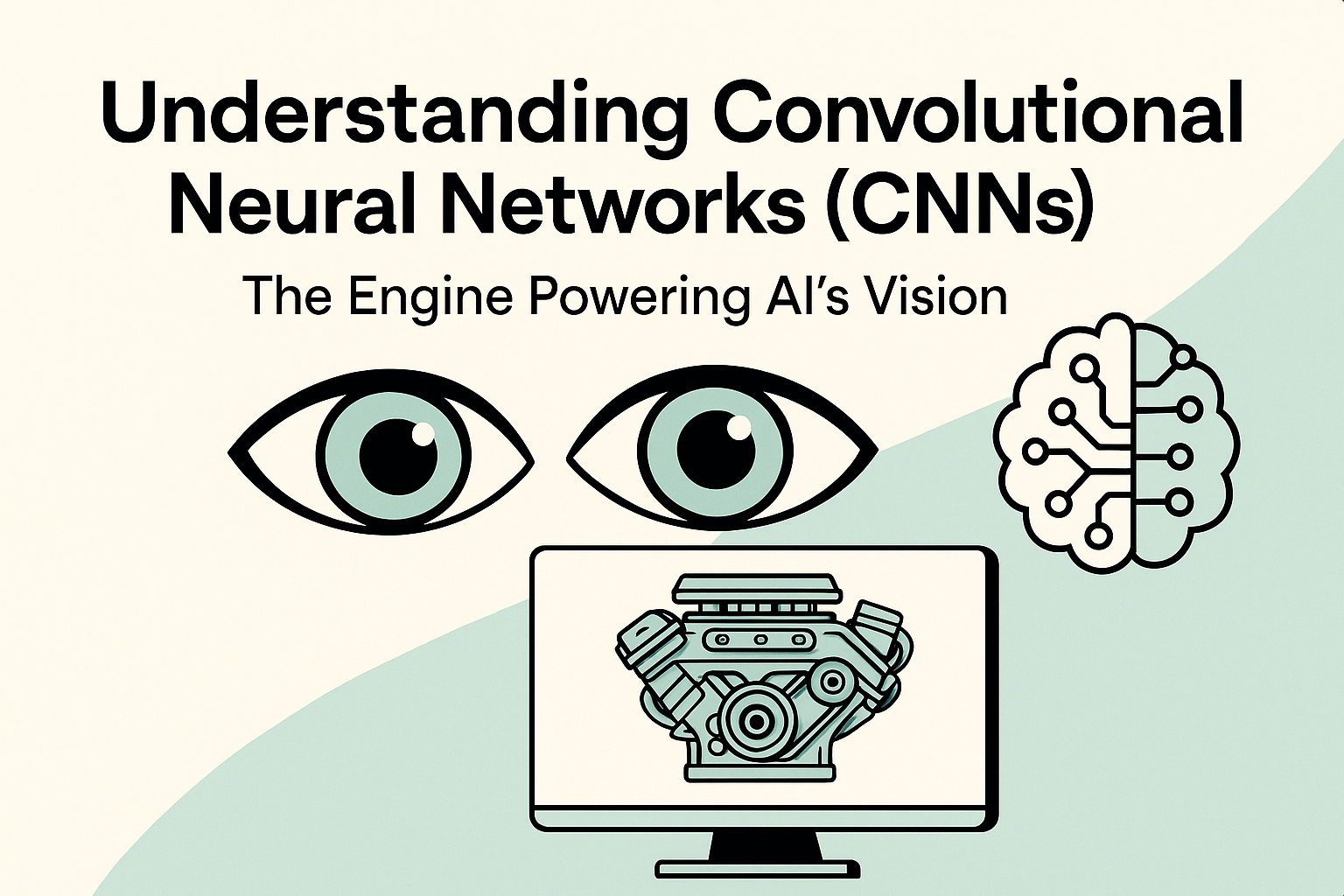
Convolutional Neural Networks (CNNs): The Engine Powering AI’s Vision
In the era of rapidly advancing artificial intelligence (AI), Convolutional Neural Networks (CNNs) have become essential to helping machines “see” the world. As the backbone of many computer vision systems, Convolutional Neural Networks enable machines to recognize patterns, detect objects, and understand visual data much like the human brain does.
What is CNN?
A Convolutional Neural Network (CNN) is a type of artificial neural network architecture specifically designed to automatically recognize visual patterns. CNNs are highly effective in tasks such as image classification, object detection, facial recognition, and even autonomous vehicle control.
Compared to traditional neural networks (fully connected neural networks), CNNs are much more efficient at processing image data because they can preserve spatial structure (pixel patterns) and significantly reduce the number of parameters.
CNN: Deep Learning or Machine Learning?
Simply put, CNN is a part of deep learning, and deep learning itself is a branch of machine learning.
- Machine Learning (ML) is a field of AI that enables machines to learn from data without being explicitly programmed.
- Deep Learning (DL) is a subfield of ML that uses multi-layered artificial neural networks to learn complex data representations.
- CNN is one of the most popular architectures in deep learning, especially for image and video data.
So, the hierarchy goes like this:
➡️ Machine Learning ⊃ Deep Learning ⊃ CNN
Key Components of CNN
CNN consists of several main layers, namely:
- Convolutional Layer: This layer is the core of a CNN. It functions to extract important features from an image, such as edges, corners, textures, or patterns. This process uses filters (kernels) that slide across the image to produce a feature map.
- Rectified Linear Unit (ReLU): After the convolution operation, the ReLU activation function is usually applied to introduce non-linearity into the model. This function replaces all negative values in the feature map with zero, while keeping positive values unchanged. Without this non-linearity, the CNN would behave like a linear model regardless of its depth. ReLU helps the network learn complex patterns more effectively and accelerates the training process.
- Pooling Layer: Pooling helps reduce the dimensions of the feature map, making the network lighter and faster without losing important information. A common type of pooling is max pooling, which takes the highest value from a group of pixels.
- Fully Connected Layer (FC): After features are extracted, this layer connects all the neurons and performs classification based on the learned features. This is where the CNN decides whether the analyzed image is a cat, a car, a human face, etc.
Where Has CNN Been Used?
CNN is no longer just an experimental technology—it has been widely adopted in various real-world applications. Here are some popular CNN architectures that already exist:
| Model | Size (MB) | Parameters | Key Strengths |
| VGG16 | 528 | 138.4M | Simple architecture, widely used in transfer learning |
| VGG19 | 549 | 143.7M | Deeper than VGG16, slightly better at complex tasks |
| Xception | 88 | 22.9M | High accuracy and efficiency with depthwise separable convolutions |
| MobileNetV2 | 14 | 3.5M | Lightweight, fast, ideal for mobile and edge devices |
Descriptions of Each CNN Model
- VGG16 is a deep convolutional neural network with 16 weighted layers. It uses a stack of small 3×3 convolutional filters and max pooling layers. Despite its large number of parameters (~138M), it remains popular due to its simplicity and strong performance in image classification tasks. It’s widely used for transfer learning.
- VGG19 is an extended version of VGG16 with three additional convolutional layers, making it deeper. It follows the same architecture style with 3×3 filters and max pooling. VGG19 can capture more complex patterns but is also more prone to overfitting without sufficient data. Like VGG16, it’s used in many pre-trained model applications.
- Xception stands for “Extreme Inception” and is based on the Inception architecture, but replaces its modules with depthwise separable convolutions. This design reduces computation while maintaining or even improving accuracy. Xception is efficient and has fewer parameters than VGG, making it suitable for high-performance deep learning tasks.
- MobileNetV2 is designed for mobile and embedded vision applications. It uses depthwise separable convolutions and inverted residuals to minimize size and maximize speed. With only ~3.5 million parameters, it’s ideal for devices with limited processing power while still achieving respectable accuracy. Perfect for real-time, on-device AI tasks.
There are still many more CNN models available. If you want to explore further, you can check out Keras Applications.
References
- IBM. (n.d.). What are convolutional neural networks?. Retrieved April 15, 2025, from https://www.ibm.com/think/topics/convolutional-neural-networks
- Keras. (n.d.). Keras applications. Retrieved April 16, 2025, from https://keras.io/api/applications/
- Masood, D. (2023, October 17). Pre-trained CNN architectures designs, performance analysis and comparison. Medium. https://medium.com/@daniyalmasoodai/pre-train-cnn-architectures-designs-performance-analysis-and-comparison-802228a5ce92
- Google Cloud. (n.d.). What’s the difference between deep learning, machine learning, and artificial intelligence?Retrieved April 16, 2025, from https://cloud.google.com/discover/deep-learning-vs-machine-learning?hl=rn
One comment on “Convolutional Neural Networks (CNNs): The Engine Powering AI’s Vision”